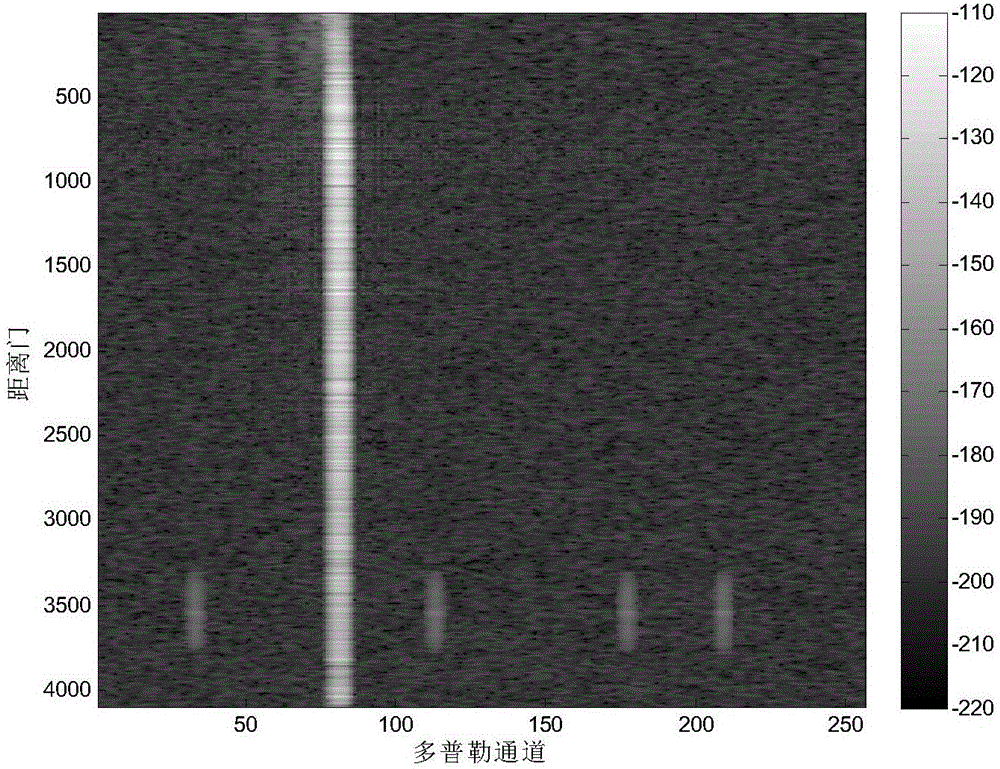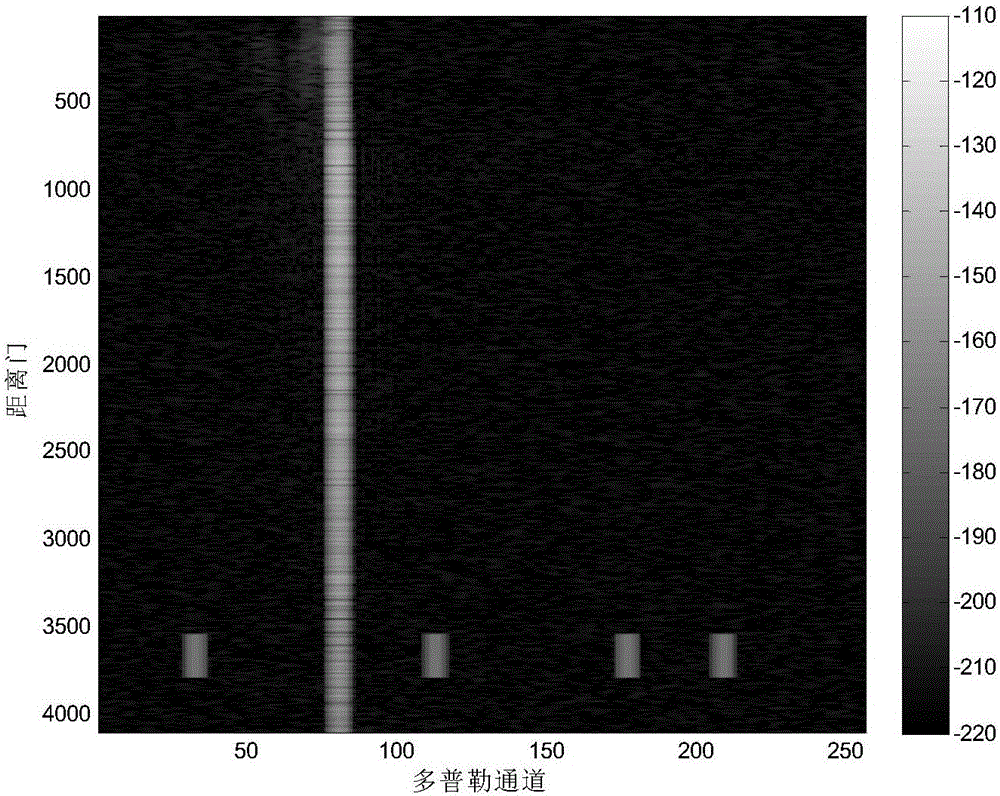Time-space adaptive processing method based on radar amplitude and Doppler frequency estimation
A Doppler frequency, space-time self-adaptive technology, applied in the field of radar, can solve the problems of inability to solve power dispersion, inability to eliminate target signals from training data, and aggravate target signals to contaminate training samples, etc., to improve performance and avoid contamination. Effect
- Summary
- Abstract
- Description
- Claims
- Application Information
AI Technical Summary
Problems solved by technology
Method used
Image
Examples
Embodiment Construction
[0026] refer to figure 1, is a flow chart of a space-time adaptive processing method based on radar target parameter estimation of the present invention; the space-time adaptive processing method based on radar target parameter estimation includes the following steps:
[0027] Step 1, determine the airborne radar, the airborne radar transmits a pulse signal and receives the radar echo signal within the detection range, the pulse width of the radar echo signal is T p , and the pulse repetition interval of the airborne radar transmitting pulse signal is PRI, the number of array elements of the airborne radar antenna array is N, and the pulse number of the airborne radar antenna array within a coherent processing interval (CPI) is M, the maximum number of unambiguous range units of the airborne radar is L,
[0028] The radar echo signals received by the airborne radar within the detection range are subjected to down-conversion processing, pulse compression processing, and anal...
PUM
 Login to View More
Login to View More Abstract
Description
Claims
Application Information
 Login to View More
Login to View More - R&D
- Intellectual Property
- Life Sciences
- Materials
- Tech Scout
- Unparalleled Data Quality
- Higher Quality Content
- 60% Fewer Hallucinations
Browse by: Latest US Patents, China's latest patents, Technical Efficacy Thesaurus, Application Domain, Technology Topic, Popular Technical Reports.
© 2025 PatSnap. All rights reserved.Legal|Privacy policy|Modern Slavery Act Transparency Statement|Sitemap|About US| Contact US: help@patsnap.com



